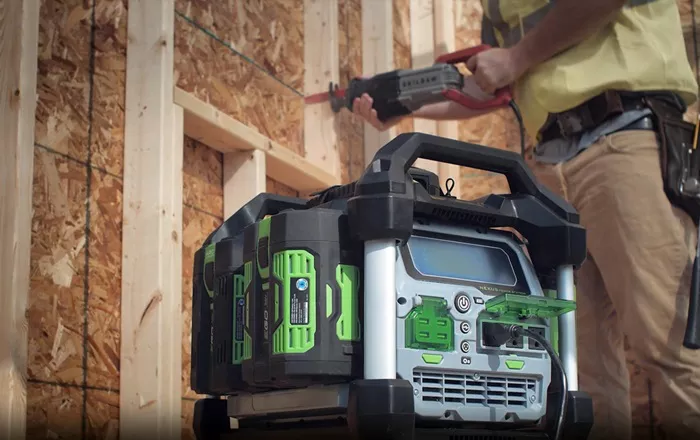Portable generators have become essential devices for homeowners seeking reliable backup power during outages. Unlike permanently installed home generators, portable models offer flexibility and cost savings. Knowing how to wire a portable generator to your home correctly is vital to ensure safety and functionality.
In this article, we will guide you through the step-by-step process of wiring a portable generator to your home. We will explain key concepts, safety precautions, necessary equipment, and wiring methods. This knowledge will help you prepare for emergencies and make the most out of your home generators.
Understanding Home Generators and Their Uses
Home generators provide electricity when the main power supply fails. They help keep essential appliances running, such as refrigerators, heating systems, and lights. Portable generators are particularly popular because they are affordable and easy to move.
There are different home generators types, including standby, inverter, and portable models. Portable generators are versatile and ideal for temporary power needs. Their main uses include emergency backup, outdoor work sites, camping, and recreational activities.
Benefits of Using Portable Generators for Home Power
- Cost-effective compared to permanent generators.
- Easy to transport and store.
- Provides immediate power during outages.
- Can power multiple devices simultaneously with proper wiring.
Safety First: Essential Precautions Before Wiring
Working with electricity requires caution. Improper wiring of a portable generator to your home can cause injury, damage, or even fatal accidents. Before you begin, keep these safety tips in mind:
- Always consult your local electrical codes and regulations.
- Use a transfer switch or interlock kit to prevent backfeeding, which can endanger utility workers and damage equipment.
- Never plug a generator directly into a wall outlet. This is extremely dangerous and illegal.
- Ensure your generator is grounded correctly.
- Keep the generator outdoors in a well-ventilated area to avoid carbon monoxide poisoning.
- Use heavy-duty extension cords rated for outdoor use and adequate amperage.
Equipment You Will Need
Before wiring your portable generator to your home, gather the following essential items:
- Portable generator with sufficient power output.
- Manual transfer switch or generator interlock kit.
- Proper gauge extension cords rated for outdoor use.
- Grounding rod and grounding wire (if needed).
- Basic electrical tools: screwdriver, wire stripper, voltage tester, wrench.
- Protective gear: gloves and safety goggles.
Step-by-Step Guide to Wiring a Portable Generator to Your Home
Step 1: Assess Your Power Needs
Calculate the total wattage of the appliances and devices you want to power. Portable generators have limited output, so prioritize critical loads like refrigerators, heating systems, lights, and communication devices.
Step 2: Choose a Transfer Method
The safest and most recommended method is to install a manual transfer switch. This device allows you to safely switch between utility power and generator power without risking backfeed. Alternatively, an interlock kit installed on your breaker panel can achieve similar safety.
Step 3: Install the Transfer Switch or Interlock Kit
This step usually requires a licensed electrician. The transfer switch is mounted near your main electrical panel and wired to specific circuits you want powered by the generator.
Once installed, the transfer switch will isolate the circuits from the utility grid, preventing dangerous backfeed and protecting utility workers.
Step 4: Connect the Generator to the Transfer Switch
Most transfer switches have a dedicated inlet or connector for the generator. Use a proper generator power cord to connect the portable generator to this inlet.
Make sure the generator is grounded as per manufacturer instructions, usually via a grounding rod driven into the earth.
Step 5: Starting and Operating the Generator
- Turn off all circuits on the transfer switch before starting the generator.
- Start the generator and let it stabilize.
- Switch the transfer switch to the generator position.
- Turn on circuits one at a time, prioritizing critical appliances to avoid overload.
Step 6: Shutting Down the Generator
- Turn off all circuits on the transfer switch.
- Switch the transfer switch back to utility power.
- Turn off the generator.
- Disconnect the generator cord safely.
Alternative Method: Using Extension Cords for Individual Appliances
If installing a transfer switch is not feasible, you can power individual appliances using heavy-duty extension cords from the generator. This method is less convenient and requires careful planning.
Ensure extension cords are rated for outdoor use and sufficient amperage. Never overload cords or plug the generator into home wiring directly.
Common Mistakes to Avoid When Wiring a Portable Generator
- Not using a transfer switch or interlock kit.
- Plugging the generator directly into the home outlet (“backfeeding”).
- Ignoring local electrical codes and regulations.
- Failing to ground the generator.
- Using inadequate or damaged extension cords.
- Operating the generator indoors or in enclosed spaces.
Maintenance Tips for Your Portable Generator
Regular maintenance ensures your generator works reliably when needed:
- Check oil and fuel levels before each use.
- Inspect air filters and clean or replace if dirty.
- Run the generator periodically even when not in use.
- Store fuel safely and use fuel stabilizers if storing long-term.
- Inspect cords and connections for wear or damage.
Conclusion
Properly wiring a portable generator to your home is essential for safety and reliable power backup. Using a transfer switch or interlock kit, grounding your generator, and following electrical codes will protect your family and property.
Portable generators are a cost-effective and flexible solution among home generators, providing power for essential needs during outages or remote locations. Always prioritize safety, plan your power needs carefully, and consult professionals when in doubt.
With the right preparation and equipment, you can keep your home running smoothly no matter the situation.

